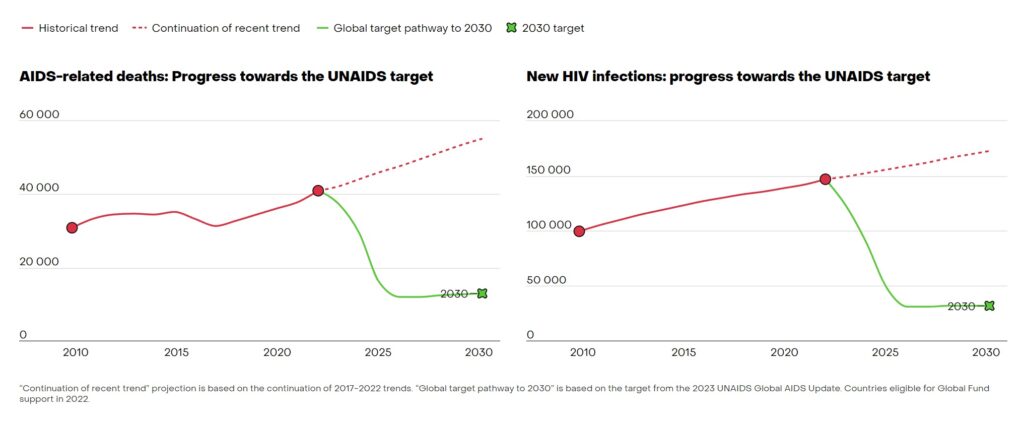The Global Fund to Fight AIDS, Tuberculosis and Malaria has published its 2023 report. In it, the organization shared its achievements after a difficult period of the coronavirus epidemic in the world.
The Global Fund’s 2023 Performance Report details how investments continued to provide vital services for people affected by HIV, tuberculosis and malaria. The partnership has also played a critical role in supporting countries and communities to accelerate their recovery from the COVID-19 pandemic and build resilient and sustainable health systems that can respond to current and future health threats.
“In 2022, the Global Fund partnership has regained momentum in the fight against HIV, tuberculosis (TB) and malaria after the COVID-19 pandemic slowdown,” said Peter Sands, Executive Director of the Global Fund. – “After the hard-won gains of the past two decades were abruptly reversed in 2020, followed by only a partial recovery the following year, we saw a rapid acceleration in programmatic results in the fight against these three diseases in 2022. We put more people on antiretroviral treatment for HIV than ever before, identified and started treatment for more people with tuberculosis than ever before, and distributed a record number of mosquito nets to prevent malaria. Overall, most of our prevention and treatment programs exceeded the results achieved before the COVID-19 pandemic”.
In 2022, we accelerated the resumption of HIV testing services for the most vulnerable groups. HIV prevention services reached 15.3 million people, including 6.8 million key populations and 7.6 million young people (including 3.6 million adolescent girls and young women). The Global Fund supports the procurement of innovative products, such as long-acting pre-exposure prophylaxis (PrEP), including injectable cabotegravir (CAB-LA), and the dapivirine vaginal ring.The Fund also invests in promoting community engagement and leadership to reach key and vulnerable populations who are at significantly higher risk of HIV infection than the general population.
The percentage of people in need of antiretroviral therapy who received it has increased significantly in recent years, from 48% in 2015 to 78% in 2022. 24.5 million people were receiving life-saving antiretroviral therapy in countries where the Global Fund invests in 2022, up from 17.5 million in 2017.
“Many countries are still not on track to reach the goal of ending AIDS as a public health threat by 2030, especially given the number of new HIV infections that are still occurring. COVID-19 has largely affected HIV prevention services, which are critical to reducing HIV transmission. By taking bold action now, we can reverse this trend and get back on track to end AIDS by 2030,” the report’s authors say.
AIDS mortality and prevalence trends in Eastern Europe and Central Asia:

You can get acquainted with the report by following the link The Global Fund Results Report 2023



